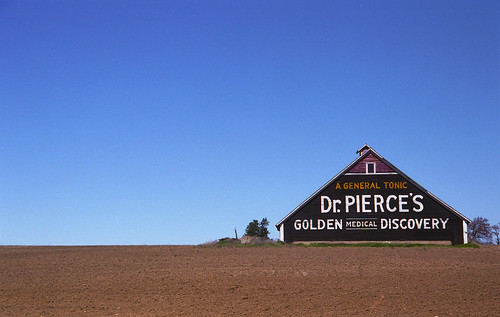 That was the headline of the full page ad on page A6 of Monday’s Austin American-Statesman. I’ve seen the ad before – I do still read the print version of the newspaper with my morning coffee – but for some reason, on that particular day it grabbed my attention.
That was the headline of the full page ad on page A6 of Monday’s Austin American-Statesman. I’ve seen the ad before – I do still read the print version of the newspaper with my morning coffee – but for some reason, on that particular day it grabbed my attention.
It was like playing the game where you look at the image and see the picture of the old woman or the young lady – or any number of visual puzzles. I read on with intrigue.
I’ve been a physiotherapist for 23 years. I have reviewed a few MRIs over the years. Out of curiosity today, I took a look at the MRI image in the ad. At first glance, it was a mild herniated disc. Lo and behold, the first line of the ad stated such: “Do you see it? It’s called a herniated disc, a painful condition that can cause severe sciatic nerve pain”.
It only took two sentences, and I was on a rant.
A herniated disc is the norm amongst those who live on planet earth. If you are asymptomatic, 7 of 10 people will have a herniated disc on MRI. Keep in mind, that is for people that don’t have pain. Yes, an MRI can be a valuable imaging technique as it produces a highly accurate image. But it also has to correlate with the patient’s symptoms (or lack thereof). In the example of low back pain and sciatica, it is typically over-utilized. Most well-established clinical guidelines do not recommend it’s use in the initial assessment process.
The MRI also won’t predict the onset of pain. You have to go to Vegas to bet on those types of things. So for the vast majority of people, a herniated disc is not a painful condition – though it can be at times.
The power of fear. This has the potential to sound kind of like “weapons of mass destruction” to me – and we know what happened with that premise a few years ago.
If you were able to get past the first paragraph of the ad, then you were lead down the path of treatment. And this is where it all gets even worse. Apparently, according to the ad, the new patient cost is typically $247, but for 10 days, it’s free. Deal! Free! I think I need to check into this. Hey, let’s explore this further.
To quote:
“You’ll simply lie on your stomach or back, whichever is comfortable, and then a specialized belt is gently put around your waist. We’ll set the machine to focus on your problem area – then the advanced decompression computer system will do the rest.”
As a side note, spinal decompression “strategies” typically involve a “protocol” that lasts anywhere from 12 to 15 visits, at which time there should be “evidence of some demonstrable benefit”.
(Side note to the side note: try a Google Search on “spinal decompression protocol”. You’ll find that the first page of search results is inundated with chiropractic offices that use the exact same content on virtually the exact same platform. You make the call on that one.)
The new patient cost may have been discounted, but the treatment cost certainly hasn’t!
Regardless of evidence, competent self care strategies, or clinical guidelines, apparently this stuff sells. Hey, it was a full page ad in the Austin American-Statesman - a newspaper that ranks 60th in circulation nationwide in the 36th largest metropolitan area of the United States. Need I say more?
Photo credits: Great Beyond

 "Running Injuries: Etiology And Recovery- Based Treatment" (co-author Bridget Clark, PT) appears in the third edition and fourth editions of "Clinical Orthopaedic Rehabilitation: A Team Approach" by Charles Giangarra, MD and Robert C. Manske, PT.
"Running Injuries: Etiology And Recovery- Based Treatment" (co-author Bridget Clark, PT) appears in the third edition and fourth editions of "Clinical Orthopaedic Rehabilitation: A Team Approach" by Charles Giangarra, MD and Robert C. Manske, PT.
 Allan Besselink, PT, DPT, Ph.D., Dip.MDT has a unique voice in the world of sports, education, and health care. Read more about Allan here.
Allan Besselink, PT, DPT, Ph.D., Dip.MDT has a unique voice in the world of sports, education, and health care. Read more about Allan here.
 Top 5 finalist in three categories: "Best Overall Blog", "Best PT Blog" and "Best Advocacy Blog".
Top 5 finalist in three categories: "Best Overall Blog", "Best PT Blog" and "Best Advocacy Blog".